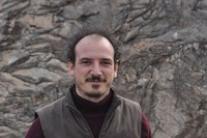On Friday, 18 October 2025 we hosted approximately 500 high school students at
NASA funds effort to model planetary core formation
Thu, 12/03/2020 - 8:55amGabriele Morra, of our Physics Department and School of Geosciences, and a team of researchers from Tulane and Louisiana State University have been awarded a $918,117 grant from NASA for "A combined chemical and physical investigation of metal-silicate reactions in magma oceans". The 3-year award was highly competitive with a 15% success rate and includes funding for a new doctoral assistantship.
The proposal is about building a coupled physical and chemical model of Earth's and planetary core formation. The core forms during a very brief (in geological terms) accretion phase when metal and silicates are liquid, due to the energy released by the impact of the meteorites on the forming planet. In this phase, the planet is covered of magma oceans, within which the heavier metal separates and sink to the center of the planet. To understand how liquid metals and silicates exchange elements and therefore determine the composition of the core and Earth's mantle is a grand interdisciplinary challenge that requires collaboration between geochemists, mineral physicists, and geodynamicists. This proposal brings together (i) experimental geochemistry at Tulane, (ii) computational mineral physics at LSU, and (iii) chemical and physically coupled fluid dynamic modeling at UL Lafayette. It will also involve experiments with laser-heated diamond-anvil cell and multi-anvil available at the Johnson Space Center. The reseachers goal is to create the most advanced and complete model of planetary core formation ever done.

